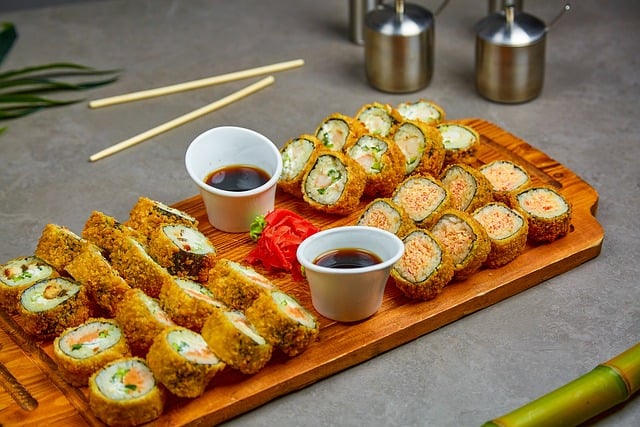Sushi, a beloved Japanese delicacy, has captured the hearts and palates of people worldwide. While traditionally crafted by skilled chefs, modern technology has revolutionized sushi-making. Machines have become integral to sushi production, offering efficiency, precision, and consistency in every roll.
Table of Contents
Streamlining Rice Preparation
One of the critical components of sushi is the rice, which requires precise cooking and seasoning. Machines for sushi rice preparation automate this process, ensuring uniform texture and flavor. These machines accurately measure ingredients, cook rice to perfection, and evenly distribute seasoning, eliminating the variability often encountered with manual preparation.
Efficient Rice Rolling
Rolling sushi requires finesse and skill, traits that machines emulate with remarkable precision. Sushi rolling machines automate the assembly process, effortlessly shaping rice and ingredients into tight, uniform rolls. This mechanized approach significantly reduces production time and enhances consistency, resulting in perfectly rolled sushi every time.
Precision in Fish Slicing
Achieving the ideal thickness and uniformity in fish slices is crucial for the aesthetics and taste of sushi. Specialized machines equipped with razor-sharp blades precisely slice fish with unparalleled accuracy. These machines ensure consistency in slice thickness, minimize waste, and optimize yield. Additionally, automated slicing enhances food safety by reducing the risk of injuries associated with manual slicing techniques.
Automated Ingredient Dispensing
From seaweed wrappers to fillings like avocado and cucumber, sushi encompasses an array of ingredients that require precise handling. Automated ingredient dispensing machines streamline the assembly process by accurately portioning and dispensing ingredients according to predetermined specifications. This automated approach enhances efficiency, minimizes ingredient waste, and ensures uniformity in each sushi roll.
Innovative Maki Making
Maki, a popular type of sushi characterized by rolled seaweed containing rice and fillings, presents unique challenges in assembly. Maki-making machines automate the intricate process of rolling and shaping sushi rolls, eliminating the need for manual labor. These innovative machines produce consistent results, allowing sushi chefs to focus on creativity and flavor combinations while maintaining efficiency in production.
Enhancing Food Safety
Food safety standards are paramount in sushi production to prevent contamination and ensure consumer well-being. Machines equipped with sanitary design features and easy-to-clean surfaces, such as those found in sushi production equipment from http://www.sushimachine.com.au/, contribute to a hygienic food production environment. By minimizing human contact with food ingredients, these machines reduce the risk of cross-contamination and uphold stringent food safety protocols. These machines exemplify best practices in maintaining cleanliness and hygiene in sushi production facilities.
Optimising Workflow in Busy Kitchens
Optimizing workflow becomes imperative in busy sushi restaurants and catering facilities, where time is precious, and meeting customer demand is crucial. Sushi machines serve as invaluable tools in this endeavor, playing a pivotal role in automating labor-intensive tasks and streamlining production processes. By alleviating the burden of manual labor and enhancing output capacity, these machines empower kitchen staff to manage high-volume orders with precision and ease efficiently. This increased efficiency ensures timely service and allows staff to focus on maintaining quality and customer satisfaction amidst the bustling kitchen environment.
Meeting Diverse Consumer Preferences
Sushi machines excel at meeting consumers’ varied preferences, whether they entail adhering to dietary restrictions or exploring inventive sushi variations. Equipped with adjustable settings and customizable features, these machines effortlessly adapt to various sushi styles, ingredient combinations, and portion sizes. This adaptability empowers sushi establishments to broaden their customer base while upholding consistent quality standards. By offering versatility and precision in sushi production, these machines ensure that every diner’s preferences are met with precision and satisfaction.
Conclusion
The incorporation of machines into sushi production signifies a groundbreaking transformation in culinary practices. Across every stage, from rice preparation to final assembly, these machines elevate efficiency, precision, and consistency while preserving the artistry and heritage of sushi craftsmanship. By leveraging the advancements in modern technology, sushi makers can adeptly respond to consumers’ ever-changing preferences. This innovative approach ensures the maintenance of traditional flavors and opens doors to new and creative culinary possibilities, captivating taste buds worldwide.
Featured Image by mekan abdyllayew from Pixabay




